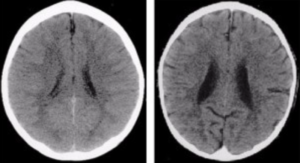
 Habit is an attachment dysfunction. Human beings, addicts or not, solely know and repeat what was modeled for them throughout childhood. I prefer to name ages 0-10 wholesome narcissism on condition that the world, because it ought to, revolves across the youngster. If the kid isn’t fed, he/she might be hungry; if the kid isn’t given shelter, he/she goes with out shelter; and if the kid’s diaper isn’t modified, he/she might be moist. Furthermore, if, for instance, the kid’s mother and father divorce, who’s at fault within the youngster’s thoughts? Clearly, on condition that the world revolves across the youngster, the kid believes she or he is responsible. ‘If I simply would have cleaned my plate’, ‘If I’d have been a greater boy…’, ‘If I simply would have saved my room clear.’ All these messages kind the messages or fashions for future habits of the kid.
Habit is an attachment dysfunction. Human beings, addicts or not, solely know and repeat what was modeled for them throughout childhood. I prefer to name ages 0-10 wholesome narcissism on condition that the world, because it ought to, revolves across the youngster. If the kid isn’t fed, he/she might be hungry; if the kid isn’t given shelter, he/she goes with out shelter; and if the kid’s diaper isn’t modified, he/she might be moist. Furthermore, if, for instance, the kid’s mother and father divorce, who’s at fault within the youngster’s thoughts? Clearly, on condition that the world revolves across the youngster, the kid believes she or he is responsible. ‘If I simply would have cleaned my plate’, ‘If I’d have been a greater boy…’, ‘If I simply would have saved my room clear.’ All these messages kind the messages or fashions for future habits of the kid.
Half I of this text supplied a definition and fundamental framework for Attachment Idea. Attachment idea gives that almost all people didn’t develop up with a mannequin for safe attachment; thus, therapy for habit requires offering a mannequin of safe attachment in order that people can observe wholesome habits in response to ache and discomfort apart from appearing out in addictive habits.
Theoretically, Mary Ainsworth PhD (1969) outlined safe attachment as creating when a caretaker exhibits consciousness of a kid’s feelings and shortly attends to the kid when distressed. The kid’s notion is that the caretaker is constant in presence and provision; thus, the kid feels protected in exploring their world due to their sense of certainty that their caretakers might be there for them in a nurturing method if wanted. Total, attachment idea assumes that the experiences of childhood relationships form grownup attachment type; thus, for instance, the explanation why adults who have been bodily abused as youngsters have a excessive propensity for abusing their youngsters. That is the habits that was modeled and sometimes the one mode that the grownup has for responding to anger.
The Scientific Hyperlink Between Attachment and Habit:

Attachment idea posits that an toddler learns mandatory expertise for survival and the event of an Inside Working Mannequin (IWM) whereby the definition of how the individual views the world, themselves, and others is outlined. “Attachment representations present predictive associations with a variety of pathological habits together with persona dysfunction(s), temper disturbance, [substance dependence] and psychopathology” (Caspers, Yucuis, Troutman, & Spinks, 2006). Due to this fact, the authors conclude that childhood attachment kinds (safe or insecure) have a direct influence on the prevalence of Substance Abuse Problems.
Researchers Kendler and Prescott (2006) reviewed the findings of the Virginia Twin Research of Adolescent Behavioral Improvement (VTS) for the aim of exploring the depth of affect between genetics and setting because it pertains to addictiveness and psychological well being problems. VTS had a pattern measurement of two,762 white twins between the age of 8-16 years outdated and their households. Kendler and Prescott concluded that there aren’t any genes particularly chargeable for Substance Use Dysfunction, however quite, there are genes that an particular person can inherit that predispose them to patterns of habits intently related to Substance Use Dysfunction. Moreover, the authors concluded that if youngsters are introduced up in “protecting environments”, despite the fact that genetically they’re predisposed to patterns related to Substance Abuse Dysfunction, the setting has a possible potential to be a protecting issue towards Substance Abuse Dysfunction.
The Mind:
Lastly, researchers have straight correlated neurobiology of the human mind and the significance of caregiver attachment relationships throughout childhood to psychological well being in maturity (Miehls, 2011, p. 82). Moreover, the analysis has indicated that insecure attachments throughout childhood impacts, negatively, the event of sure areas of the mind. Furthermore, Miehls states “relationships have the capability to rebuild sure elements of the mind that affect our social and emotional lives,”) (Miehls, p. 81).
The advantage of the connection between neurobiology and attachment is that mind neuroplasticity (the flexibility of the mind to be re-formed) permits for a corrective expertise or safe attachment mannequin throughout maturity resulting in constructive modifications within the affected person; thus, lessening the necessity to make the most of addictive habits to take care of abandonment, trauma, abuse, and emotional ache and many others. Furthermore, the implication for treating substance dependence signifies the significance of a safe attachment relationship between the clinician and the affected person to offer a baseline mannequin or definition.
Habit as an Attachment Dysfunction
The attachment system of an individual is developed as a baby in proportion to the connection between the kid and the caregiver; thus, if the attachment course of is poor, the kid may have points associated to emotional regulation. Due to this fact, as an grownup, the individual is more likely to make the most of medication and different substances to manage feelings as a method of adapting to an lack of ability to manage feelings realized as a baby (Kohut 1977).
Medication create a capability for an individual to have the phantasm of shallowness, self-confidence, worthiness and “improve emotions of being alive” (Kohut 1977). An addict makes an attempt to outline consolation and safety (lacking of their vocabulary) by way of using addictive substances or habits; nevertheless, exterior sources apart from safe modeling will result in continued dysfunctional definitions and continued addictiveness.
Treating Addictiveness and Substance Dependence by way of Attachment Idea:
Current research have positively confirmed {that a} direct hyperlink exists between insecure attachment and substance dependence (Schindler, Thomasius, Sack, Gemeinhardt, 2007; Schindler, Thomasius, Sack, Gemeinhardt & Eckeert, 2005).
“Attachment Oriented Remedy” (AOT) has been described as “a manner of eliciting, integrating and modifying kinds represented inside an individual’s inner working mannequin” Flores (2004) p. 214). Flores (2001, 2004) goes on to clarify that the IWM have to be modified or habit will proceed or substitution of 1 habit for an additional will persist. The important thing level is that when a person begins to study (which requires a mannequin) easy methods to self-soothe, thus, studying easy methods to regulate feelings and emotions, they’ll keep away from searching for exterior sources as a method of managing these feelings (Blaine & Julius, 1977; Flores, 2001; Flores, 2004).
The overwhelming majority of people in therapy at this time have been uncovered, a number of occasions, to the therapy expertise; Due to this fact, what’s lacking? Why the intense issue in remaining sober? Haven’t they been taught effectively? Has the schooling system (the therapy trade) failed them? The reply isn’t black and white, however quite, exists throughout the assertion: We should start to deal with affected person’s in another way. The concept that we’re in a position to educate affected person’s easy methods to keep sober doesn’t equate to their potential to use what they’ve realized or really feel protected sufficient to discover the deeper drawback of why they proceed to make the most of addictive habits to flee emotional ache.
AOT is rooted in offering a “safe base” for a person in order that they could start to discover themselves from the within out. Attachment idea accurately posits that by offering a mannequin in therapy of a protected, safe base, the affected person may have the flexibility to stop searching for solutions exterior themselves (medication, alcohol, intercourse, meals and many others.) and start to heal from the within out. Furthermore, by offering this security, affected person’s have the flexibility to specific and really feel feelings in a susceptible and genuine capability; thus, the willingness to handle the issue, quite than the answer (the addictive habits).
“A Completely different Method to Deal with Folks”
Conclusion
Total, what’s lacking in therapy at this time is the understanding and compassion of being relational with sufferers. The irony on this assertion is that AA promotes compassion and being relational with people; nevertheless, that is the half that almost all conventional therapy misses. Alternatively, conventional therapy gives an schooling versus modeling habits that gives the flexibility to develop safe attachment wanted for change.
Sadly, most addicts (in all probability most human beings basically) haven’t had a mannequin for safe attachments, thus, resulting in substance abuse and addictive habits as a method of avoiding emotional ache. For therapy and thereafter, AA and remedy to be efficient, the next ideas are mandatory:
- Therapy have to be targeted on modeling safe attachment. This requires threat on the a part of the therapy supplier and an illustration of self-disclosure and identification from the therapy workforce versus a one-up place of authority;
- Improvement of belief and alliance with the affected person is vital if the affected person goes to handle and alter realized abusive and dysfunctional patterns throughout childhood; thus, resulting in the necessity to make the most of addictive habits as a method of avoiding emotional ache;
- Continuation of care is vital. Thirty days in therapy merely scratches the floor. With no long-term aftercare plan, i.e., Partial Hospitalization, Intensive Outpatient and remedy, that focuses on abuse, attachment, and safe attachments, we are able to count on relapse charges after inpatient therapy to stay close to 5-7% inside one yr of inpatient therapy; and
- “A distinct option to deal with folks” should turn into the norm versus the exception in therapy.

The previous article was solely written by the creator named above. Any views and opinions expressed should not essentially shared by GoodTherapy.org. Questions or considerations in regards to the previous article may be directed to the creator or posted as a remark beneath.